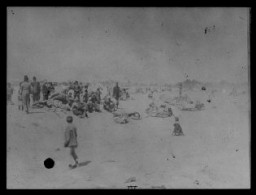You searched for: %EF%BF%BD%EF%BF%BD%EF%BF%BDWeChat%EF%BF%BD%EF%BF%BD%EF%BF%BDKAA2238%EF%BF%BD%EF%BF%BD%EF%BF%BDApply%20for%20Universit%EF%BF%BD%EF%BF%BD%20Sorbonne%20Nouvelle%20-%20Paris%203%20diploma3B7
<< Previous | Displaying results 71-80 of 313 for "%EF%BF%BD%EF%BF%BD%EF%BF%BDWeChat%EF%BF%BD%EF%BF%BD%EF%BF%BDKAA2238%EF%BF%BD%EF%BF%BD%EF%BF%BDApply%20for%20Universit%EF%BF%BD%EF%BF%BD%20Sorbonne%20Nouvelle%20-%20Paris%203%20diploma3B7" | Next >>
-
View of a criminal wing in the prison at Nuremberg
PhotoView of a criminal wing in the prison at Nuremberg, housing war crimes trials defendants. Baltic guards under the supervision of American authorities patrol the wing and keep constant watch over the prisoners. The upper floors are screened off with heavy chicken wire to discourage suicide attempts. Nuremberg, Germany, between November 20, 1945, and October 1, 1946.
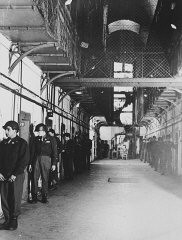
-
View of the Palace of Justice in Nuremberg
PhotoView of the Palace of Justice (left), where the International Military Tribunal trial was held. Nuremberg, Germany, November 17, 1945. The Palace of Justice was selected by the Allied powers as the location for the International Military Tribunal (IMT) because it was the only undamaged facility extensive enough to accommodate a major trial. The site contained 20 courtrooms and a prison capable of holding 1,200 prisoners.
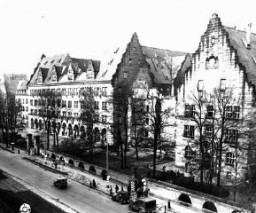
-
Defendant Fritz Sauckel
PhotoFritz Sauckel follows the proceedings of the International Military Tribunal trial of war criminals at Nuremberg. He was found guilty of war crimes and crimes against humanity and was sentenced to death. Photograph taken in Nuremberg, Germany, between November 20, 1945, and October 1, 1946.
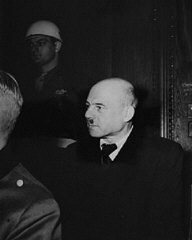
-
Fiorello H. La Guardia while touring displaced persons camps
PhotoFormer mayor of New York Fiorello H. La Guardia, on a tour of United Nations Relief and Rehabilitation Administration (UNRRA) camps in Europe, speaks to survivors. Duppel displaced persons camp. Germany, August 20, 1946.
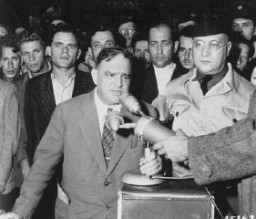
-
Seven-year-old Jacqueline Morgenstern
PhotoPhotograph of seven-year-old Jacqueline Morgenstern in Paris, France, 1940. Jacqueline was later a victim of tuberculosis medical experiments at the Neuengamme concentration camp. The SS took 20 of the children who had been victims of medical experiments at Neuengamme to a school building in Hamburg. Situated on Bullenhuser Damm, this location was a subcamp of Neuengamme. Jacqueline and the other children in the group (10 boys and 10 girls, all Jewish) were killed there.
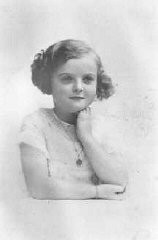
-
Jadwiga Dzido testifies at the Doctors Trial
PhotoConcentration camp survivor Jadwiga Dzido shows her scarred leg to the Nuremberg court, while an expert medical witness explains the nature of the procedures inflicted on her in the Ravensbrück concentration camp on November 22, 1942. The experiments, including injections of highly potent bacteria, were performed by defendants Herta Oberheuser and Fritz Ernst Fischer. December 20, 1946.

-
Members of the League of German Girls
PhotoA parade of young Austrian women, members of the Nazi youth organization the League of German Girls (Bund Deutscher Maedel). Graz, Austria, February 20, 1938. The Hitler Youth and the League of German Girls were the primary tools that the Nazis used to shape the beliefs, thinking and actions of German youth.
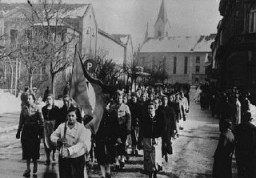
-
Deportation from the Warsaw ghetto
PhotoDeportation of Jews from the Warsaw ghetto during the uprising. The photograph was taken from a building opposite the ghetto by a member of the resistance. It shows Jews who were captured by the SS during the suppression of the Warsaw ghetto uprising marching past the St. Zofia hospital, through the intersection of Nowolipie and Zelasna Streets, towards the Umschlagplatz for deportation. Warsaw, Poland, April 20, 1943.
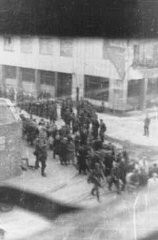
-
A Jewish child refugee who fled eastern Europe as part of the Brihah
PhotoA Jewish child refugee who fled eastern Europe as part of the organized postwar flight of Jews (the Brihah). Pictured here as an apprentice at the Selvino children's home for Jewish displaced persons. Italy, October 20, 1946.
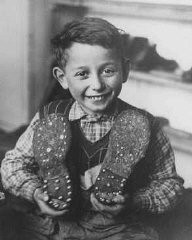
-
Armenian refugees
PhotoA group of Armenian refugees. 1915-20. Sometimes called the first genocide of the twentieth century, the Armenian genocide refers to the physical annihilation of Armenian Christian people living in the Ottoman Empire from spring 1915 through autumn 1916. There were approximately 1.5 million Armenians living in the multiethnic Ottoman Empire in 1915. At least 664,000 and possibly as many as 1.2 million died during the genocide, either in massacres and individual killings, or from systematic ill treatment,…
